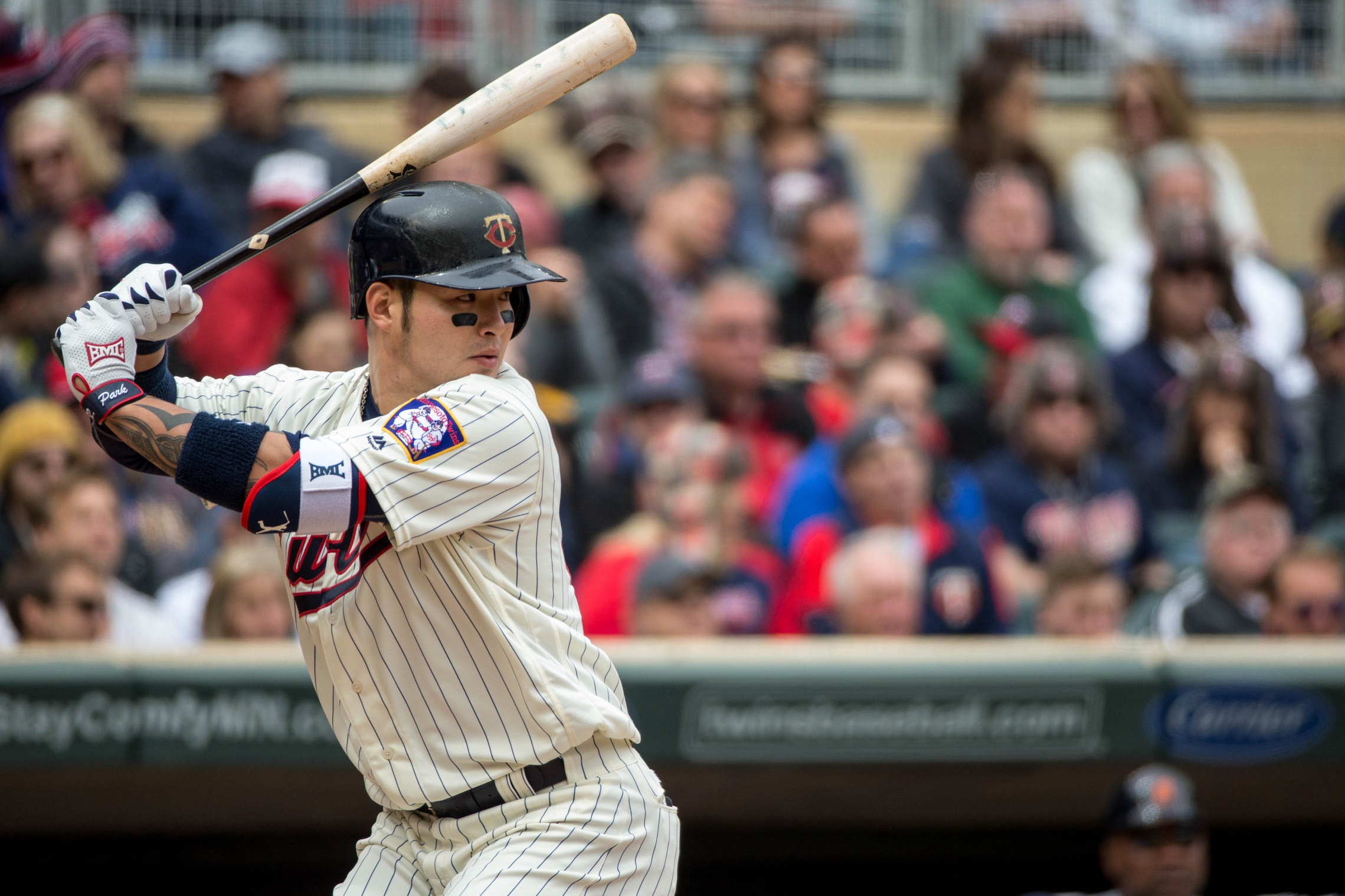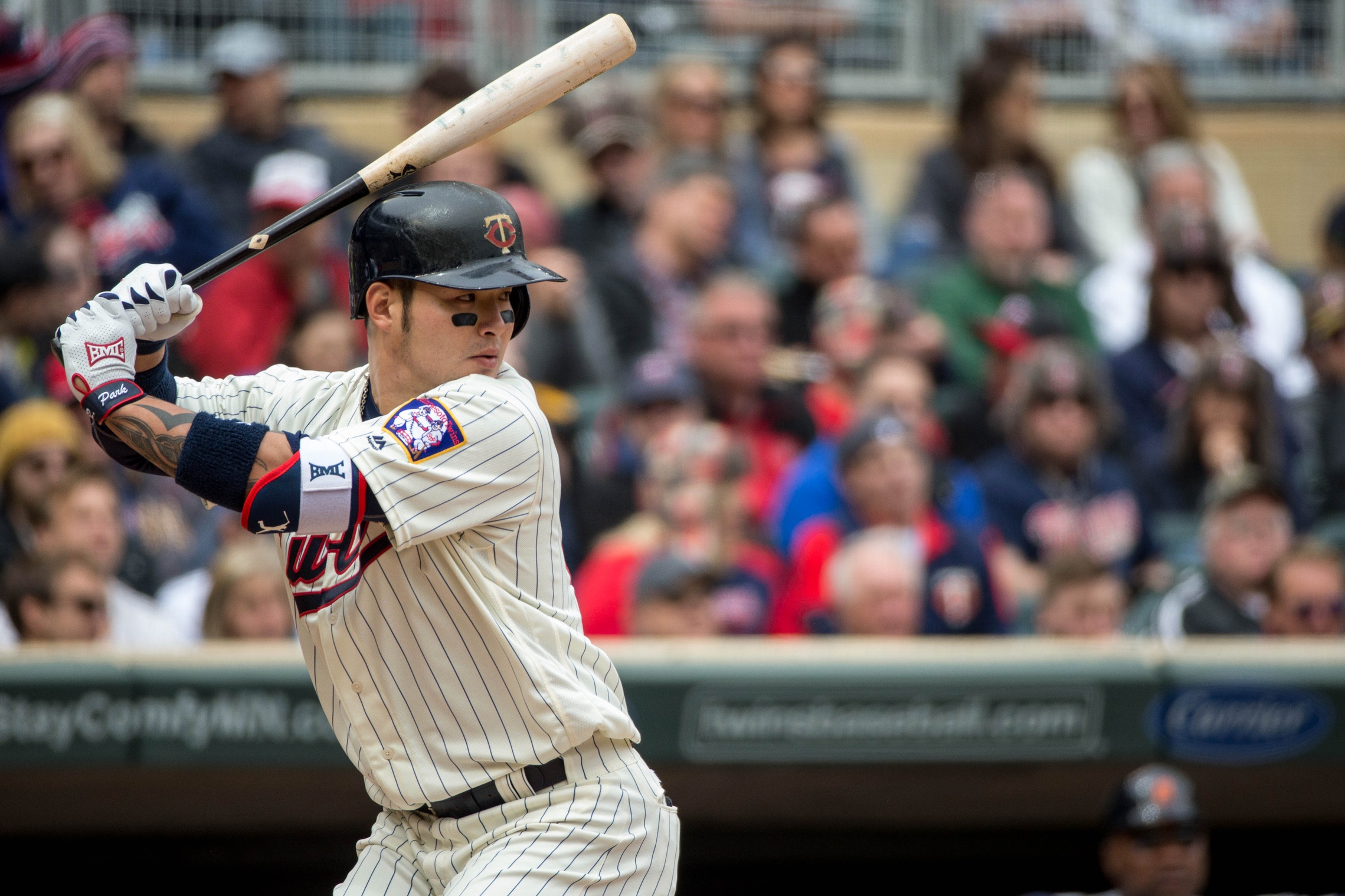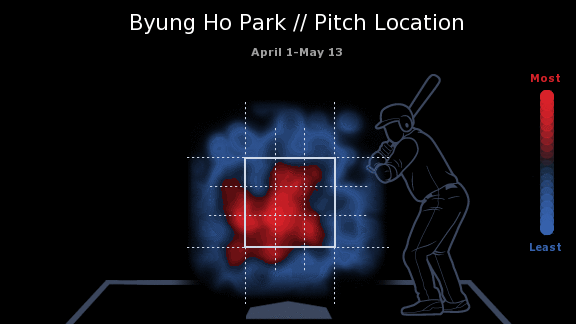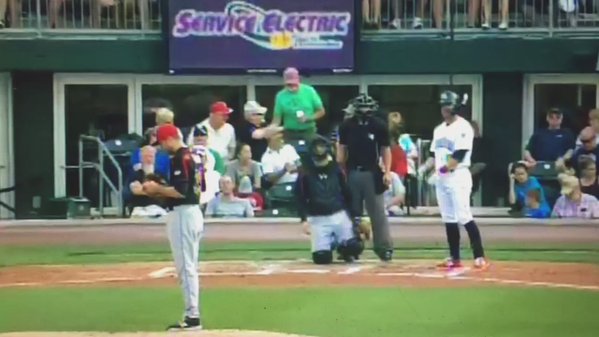Byung Ho Park’s struggles related to a season-long hand injury?@IronPigs broadcast team discusses.
Byung Ho Park’s Struggles Related To Season-Long Injury?
Image courtesy of Bruce Kockhold, USA TODAYOn May 13, in the opener of a three game series in Cleveland, Park had his first multi-homer game of his career and giving him nine on the season, pulling him within three of the AL pace-setting in Robinson Cano. He was tops among rookies in the junior circuit in home runs, and his overall numbers, while not otherworldly, were highly respectable. When the sun set on the Buckeye State that night, Park carried a .245/.324/.582 batting line. He had the shine of a legit Rookie Of The Year candidate.
But just as meteoric as his rise, Park fell quickly back to earth. Over the next 33 games, he posted a measly batting line of .145/.233/.265. His exit velocity average dropped from 90.9 MPH to 87.2. His average fly ball distance went from 250 to 208. As a predominant fly ball hitter, these metrics were troubling. Pitchers confounded him as he reportedly obsessed with higher velocity. His confidence waned. Something was amiss.
Park’s Korean Baseball Organization-honed upper-cut swing path has been perfect for mashing breaking balls: Of his 12 home runs, 8 were on curves or sliders. Only Colorado’s Trevor Story (10) and the Dodgers’ Corey Seager (9) hit more on those types of pitches. There was no doubt that Park could manhandle mistakes but he has been carved up when the sequences included fastballs with velocity 93 miles per hour or higher. In fact, Park’s struggles are so prolific, his .089 batting average against fastballs 93 MPH or higher was the lowest in baseball… with the exception of the Phillies’ Ryan Howard (.042).
Was it truly the competition and the velocity in the major leagues that bested Park? On one hand, prior to his signing, scouts did express concern over his ability to catch up to inside fastballs. On the other, hitters who graduated from the Korean league have done quite well against these exact same type of fastballs. Pittsburgh’s Jung Ho Kang, Baltimore’s Hyun Soo Kim and Seattle Dae Ho Lee all had averages over .300 on fastballs over 93 MPH this year. Not being able to face elite velocity while developing in Korea certainly did not hinder their careers.
Teams also adjusted to Park. While over a month of play seems like a crazytown amount of time to continue to throw middle-middle pitches to a guy who would obliterate them, it really took opponents that long to actively avoid that location. In short, he saw fewer mistakes.
Another possible factor for Park’s dismal performance emerged during last night’s Rochester Red Wings’ broadcast. As Seth Stohs pointed out on Twitter last night, the Lehigh Valley IronPigs announcers, noting Park’s absence from the game, said that Park had been struggling with a hand injury — one that had lingered since spring training — and was unable to maintain proper contact with the bat.
Per the broadcast:
Quote
Announcer 1: “They have this slugger, Byung Ho Park, who played last night, he’s got a bit of a hand injury. He’s out of the lineup. He’s a guy who they hoped would come down, get things right and also propel this Rochester team but it’s not going to help them if he’s not playing.”
Announcer 2: “I don’t know if I was supposed to hear it but I did hear one of [Rochester’s] coaches talking about Park having a hand injury that kind of lingered throughout the year. It started in spring training and he just decided he can’t swing a bat right now. He can’t keep the hand on the bat and he decided to shut it down.”
On Friday Brad Steil, the Twins’ Director of Minor League Operations, dismissed the broadcast banter, writing in an email to Twins Daily that there is nothing accurate about that report.
“Park does not have a hand injury and he didn’t have a hand injury (or anything else) in spring training,” Steil noted. “He does have some wrist soreness at the moment, but it’s not something that prevents him from playing. Players deal with bumps, bruises, soreness, and general fatigue throughout the course of a six month season, and we will occasionally give them days off to help manage those things.”
That kind of information seems noteworthy. It would appear, however, that there were no reports of Park’s condition mentioned anywhere dating back to spring training. To be sure, this would not be the first time a player has downplayed an injury in an effort to keep playing. While rest would be in their best interest,competitiveness and machismo drives them to play night after night in spite of falling numbers and aching body parts. In baseball, communicating with the coaching and medical staff the extent of an injury can be complicated and certainly a language barrier (even with a translator) can also add a wrinkle. Even so, if the team had knowledge of a hand injury dating back to spring training, the subsequent poor performance should have necessitated some time off rather than continuing to insert him into the lineup, further damaging his confidence.
Park’s slump could be both an issue of confidence and a nagging injury. Teams did adjust and Park seemingly did not adjust with them. At the same time, the same balls he was hitting hard into play simply were not hit with as much vigor as of late and a hand injury would be one viable reason for that.
Whether you view the hand injury as an excuse rather than an explanation for his performance is inconsequential. What does matter is his ability to hit again. Regardless of the current circumstance, Park needs confidence and rest and Rochester is an appropriate setting for both.






